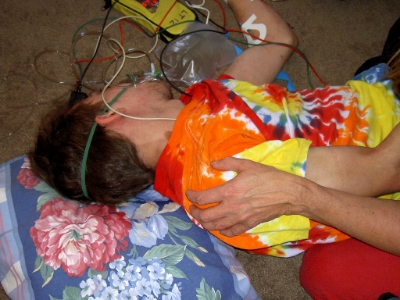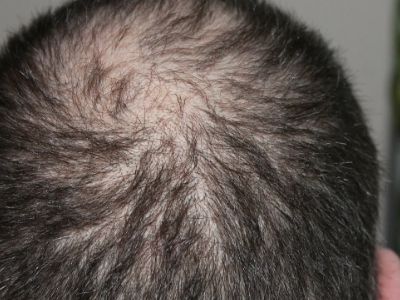Getting To Know More About Antiepileptic Drug

Antiepileptic medications do not cure epilepsy but rather attempt to prevent seizures. The medications do not alter the underlying problem predisposing to seizures. People with epilepsy are prescribed antiepileptic medications to decrease seizures’ number, severity, and duration. While seizure freedom is the ideal treatment outcome, seizures can still occur while taking antiepileptic medication.
What is an Antiepileptic Drug?
Normal brain function involves communication between millions of nerve cells. At any one time, nerve cells are resting, exciting, or inhibiting other nerve cells. A nerve cell comprises a cell body and branches called axons and dendrites, which join other neurons at synapses. Electrical signals are sent from the cell body along the axon to the synapse, resulting from ion currents across channels in the nerve cell membrane. Chemical signals pass across synapses between neurons. Neurotransmitters cross the synaptic gap between neurons and fix to receptor points of the adjoining neuron. Some neurotransmitters excite the joining neuron to send a further electrical signal. Other neurotransmitters inhibit the joining neuron and electrical signals passing down that neuron. The millions of neurons within the brain communicate and function normally through these electrical and chemical pathways.
Seizures occur when there is an imbalance within these excitatory and inhibitory circuits in the brain, either throughout the brain or in a localized part of the brain, so neurons fire off in a bizarre fashion.
Antiepileptic drugs (AEDs) protect against seizures by modulation of voltage-gated sodium and calcium channels, enhancing GABA receptor-mediated synaptic inhibition, and inhibiting ionotropic glutamate receptor-mediated synaptic excitation.
How Do Antiepileptic Drugs Work?
Antiepileptic medications work in different ways to prevent seizures, either by decreasing excitation or enhancing inhibition. Specifically, they act by either:
- Altering electrical activity in neurons by affecting ion channels in the cell membrane.
- Altering chemical transmission between neurons by affecting neurotransmitters in the synapse.
- For some drugs, the mode of action is unknown.
As the specific mechanisms that cause epilepsy are mostly unknown, drugs with specific mechanisms of an action directed at the underlying epileptic processes have not yet been developed.
List of Antiepileptic Drugs
Narrow-spectrum Antiepileptic Drugs:
- Phenytoin (Dilantin)
- Phenobarbital
- Carbamazepine (Tegretol)
- Oxcarbazepine (Trileptal)
- Gabapentin (Neurontin)
- Pregabalin (Lyrica)
- Lacosamide (Vimpat)
- Vigabatrin (Sabril)
Broad-spectrum Antiepileptic Drugs:
- Valproic acid (Depakote)
- Lamotrigine (Lamictal)
- Topiramate (Topamax)
- Zonisamide (Zonegran)
- Levetiracetam (Keppra)
- Clonazepam (Klonopin)
- Rufinamide (Banzel)
Recommended medication used for seizures:
- Levetiracetam – is in a class of medications called anticonvulsants. It works by decreasing abnormal excitement in the brain.
Side Effects of Antiepileptic Drugs
Epilepsy is a common condition that affects the brain and causes frequent seizures. Seizures are bursts of electrical activity in the brain that temporarily affect how it works. They can cause a wide range of symptoms. Epilepsy can start at any age but usually in childhood or in people over 60. It’s often lifelong but can sometimes get slowly better over time.
Seizures can affect people differently, depending on which part of the brain is involved. Possible symptoms include:

- Uncontrollable jerking and shaking are called a “fit.”
- Losing awareness and staring blankly into space
- Becoming stiff
- Strange sensations, such as a “rising” feeling in the tummy, unusual smells or tastes, and a tingling feeling in your arms or legs
- Collapsing
Sometimes you might pass out and not remember what happened.
Treatment can help most people with epilepsy have fewer seizures or stop having seizures completely.
Treatments include:
- Medicines called antiepileptic drugs – are the main treatment
- Surgery to remove a small part of the brain that’s causing the seizures
- A procedure to put a small electrical device inside the body that can help control seizures
- A special diet that can help control seizures
Some people need treatment for life. But you might be able to stop treatment if your seizures disappear over time.
Side effects are common when starting treatment with Antiepileptic drugs. Some may appear soon after starting treatment and pass in a few days or weeks, while others may not appear for a few weeks.
The side effects you may get depend on the medicine you’re taking. Common side effects of Antiepileptic drugs include:

- Drowsiness
- A lack of energy
- Agitation
- Headaches
- Uncontrollable shaking (tremor)
- Hair loss or unwanted hair growth
- Swollen gums
- Rashes
Contact your doctor or specialist if you have symptoms like being drunk, such as instability, poor concentration, and being sick. It could mean your dose is too high.



